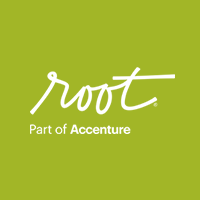Six Steps to Planning the Workshop of Your Dreams
Hey. It’s Holly and Jamie, your Root Workshop Learning Design gurus. In this article, we’re going to share our point of view on how to plan a great workshop. And when we say workshop, we’re not just talking about a fancy meeting or a full-day Root Learning Map® experience. A workshop can be the spark for new learning, new engagement, or a new way of thinking for our participants, our clients, and us.
With that cleared up, we want to ask: Have you ever thrown a party? What did it look like? Was it more like A or B?


We recently found the article, How I Learned to Throw Amazing Parties, Every Time, by Jancee Dunn. As we read through the article, we had an ah-ha moment and wanted to share it with you!
While both parties have merit, a wedding comes with intention. To execute well, it requires thoughtful planning to reflect the history, spirit, and wishes of the couple. Each part of the ceremony is engineered to highlight what the couple wants to celebrate about their relationship. And while the wedding day is important, we all know that the marriage is what really matters at the end of the day. Similarly, a great workshop is thoughtful and deliberate and sets the stage for great things to come.
Tips for Planning a Successful Workshop
At Root, we design our workshops like you’d plan a wedding.
We want them to feel thoughtful, embody the culture of our clients, and bring everybody (even your weird aunt) to the table to grow together.
We’d like to share some of our tips and tricks for creating killer workshops.
Step 1: Commit to a Purpose
When planning a workshop, you need to hone in on its purpose. If you’re trying to accomplish too much, you probably won’t be successful. So before you start planning, commit to one purpose.
For example: We helped design the Tru Start onboarding program for Tru by Hilton*. One of our design principles was to “Embody and model bringing Tru Spirit to LIFE.” If we’re thinking about it like a party, consider the table setting. You want your table to serve a purpose—to support the theme of the event, so you’d likely choose a color-coordinated, tasteful floral centerpiece. The opposite of this would be a spontaneous, unplanned “get together” where you have nothing but a stack of Solo cups and bag of popcorn on your counter.
*Not familiar with Tru? You should be! Tru is the youngest and fastest-growing franchised hotel brand in Hilton’s history. It brings unprecedented offerings, including modern and efficient designs, carefully curated amenities, and the lowest price point under the Hilton umbrella.
Be as specific and focused as possible when it comes to your audience too. Part of being specific is knowing your audience, not just your project sponsor or client contact. (Pro Tip: A Learning Design expert – ahem, like us – can help you figure this out!) What are their likes and dislikes? What motivates them? And, most importantly, what does the audience already know? A great workshop honors participants’ prior knowledge and lets them use that knowledge in new ways.
Everything we do in experience design should tie back to our audience and purpose. Workshop participants deserve the benefit of an experience that meets their needs. In Learning Design, we think of ourselves as client and learner fanatics.
As you work through the questions above, create learning objectives and design principles to guide you in bringing the purpose to life.
Step 2: Be Strategic with the Space
 Once you’ve aligned on purpose (and dates, length, audience, etc.), it’s time to think about how you’re setting this thing up. You need to think about how to plan your workshop’s physical space too. Build yourself a Pinterest board – it’s time to do some wedding planning!
Once you’ve aligned on purpose (and dates, length, audience, etc.), it’s time to think about how you’re setting this thing up. You need to think about how to plan your workshop’s physical space too. Build yourself a Pinterest board – it’s time to do some wedding planning!
Just like a well-planned party has different “zones” for eating, drinking, dancing, and mingling, a well-designed workshop also makes use of the space in strategic ways.
Think about how participants will move through the day – not just during the session, but when walking in, during breaks, when eating lunch, and so on. Try to use the entire space – there’s nothing worse than an all-day meeting where no one moves around. Snooze city. As often as possible, get participants up and moving!
For example: When Learning Map® sessions are a part of the experience, we often hang the visual on the wall when the experience is over, which allows participants to continue engaging with the content on their own terms.
Other considerations to keep in mind:
- Is there a dedicated space for recording questions?
- Are the chairs arranged so everyone can see the screen?
- Is there a place to keep snacks?
- How often am I getting everyone up and moving? What are they doing? Is it different enough from the last activity or exercise?
- The arrangement of the space is a demonstration of the relationships at work among those attending. Changing how we think about the space can help us break down barriers, challenge power hierarchies, and invite participation.
Step 3: Tell a Story with the Invite
We’ve heard that humans are wired for story and that stories give us boosts of feel-good brain chemicals and help keep us engaged. From the moment you let participants know a workshop is happening – starting with your invite – you’re telling them a story about what they’ll experience.
You have an opportunity to use the invitation to connect the workshop to what Harvard Business Review calls a company’s “transcendent purpose.” More than just how a business makes money, a “transcendent purpose” is a connection to a company’s why, which is best communicated through story. So use the invite to your advantage – hype the experience and make the reason people should attend super clear.
One more thing – as much as we LDs hate to admit it, some people have this idea that workshops are a) painfully boring, b) a waste of time, or c) both. If the workshop is meant to teach participants information, we have an even bigger challenge ahead of us: convincing them to give this event a chance and proving to them that the information we pass along matters. When Root builds a workshop, we want participants to know from the get-go – from the moment they set their eyes on the invite – that our “training” is d) awesome.
Step 4: The First Few Minutes Set the Tone
Though we build the workshop, we’re often not the ones who facilitate it. And we all know that first impressions matter. So spend time preparing the people who will bring your message to life: your facilitators.
While we often focus a lot of time on getting the facilitator’s guide correct (because it contains all the content that needs to be shared), we often spend far less time showing the facilitators how to deliver the content we spend so much time writing and rewriting. This is like spending hours on your best man toast and then handing it to the flower girl and expecting her to deliver it perfectly the first time.
As often as possible, bring your potential facilitators in early as you design the workshop – the more they feel included in the process, the easier it will be for them to teach others. And they know their colleagues better than you ever will. They’re often another voice of reason against wild client ideas that don’t have the participants’ best interests in mind.
Step 5: If You’re Going to Host, Host with Rules
Just like a great party has rules (no climbing on the roof, no t-shirt cannons, no glitter under any circumstances), setting some guidelines in advance can help make sure everyone has a good time and that no one spends weeks vacuuming glitter out of their area rugs. Based on instructional design principles, here are some basic guidelines that will help make any workshop a success:
- Make it interactive. Mix your modalities (that’s LD speak for “activities”) so learners of all stripes easily engage in the experience.
- Don’t stop the story at the invite. The entire experience should tell the story. You can make sure this story is easily heard by creating a design document at the beginning of the project that maps out your purpose, intended outcomes, and constraints. When you align the story and the objectives of the workshop, it’s much easier to decide which content stays and which content is out of scope.
- Provide snacks. And multiple breaks. And more snacks. This isn’t just for creature comfort – our brains need time away to process new information. The more we divide the learning into bite-sized chunks, the more participants retain when the workshop is over.
- Talk with people, not at them. Invite participants to apply their own knowledge and experiences and come to their own conclusions.
Step 6: Close Your Event Decisively
When the lights come on and the music stops, the workshop should have a clear ending.
The experience may be over, but the journey is usually just beginning! Just like a party isn’t the only time you interact with your friends and family, a workshop shouldn’t be a standalone event. It can signal the growth of a relationship, and opportunities to sustain the ah-has from the workshop are as important as the workshop itself. Keep asking yourself, “What’s next? How do I deepen what participants gained during this experience?” Providing support and resources will help the change stick. It’s also a great way to grow the account!
Finally, ask for feedback. Knowing what worked (and what didn’t) can help you better tailor your future engagements with the client. Don’t forget to ask for feedback from your Root team.
Planning a Workshop Takes Time, But It’s Always Worth the Effort
The content in this article, like most good learning design, has a “secret structure” that makes it flow. And we’re sharing it with you – a cheat sheet you can refer to when you need to plan our next workshop.
It’s called the 5 E’s, which stands for:
Excitement
- How are people drawn into the experience?
- What’s the invitation?
- What’s the trigger that starts it all?
Entry
- How do people enter the experience?
- How do we know they have been drawn in?
Engagement
- What is it that we want people to experience?
- What conversations, activities, and tasks are they doing?
- How do we define success?
Exit
- How do we manage the exit with grace and style?
Extension
- What’s next?
- How do we allow people to stay engaged?
- Are there follow-up actions or next steps?
- How can we set ourselves up for sustainment?
Just like a wedding, we want our workshops to be memorable – in the best way possible. By following the 5 E’s, you can ensure that every detail from start to finish (and beyond) is planned for and delivered in an unexpected, energizing, and engaging way.
We hope that after reading this article, building your next workshop will be as easy as pie. Or cake. Wedding cake, to be specific. But if you need a bit of help, call us! We’re really passionate about making sure everyone walks away from a workshop a little bit smarter! We’d be happy to help you think through how your workshop can make that happen.
Stay tuned for more workshop-related articles to help you create cool-as-sh*t workshops!






